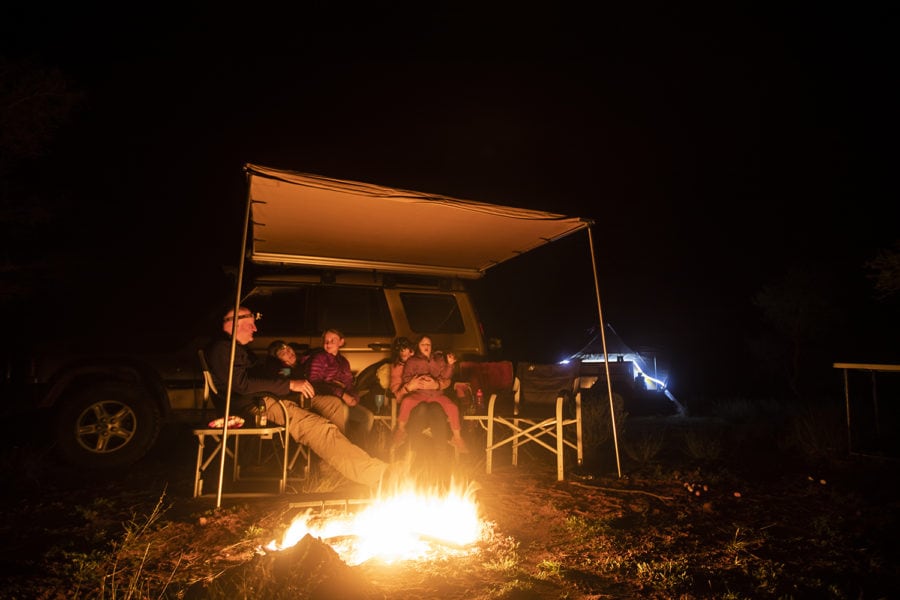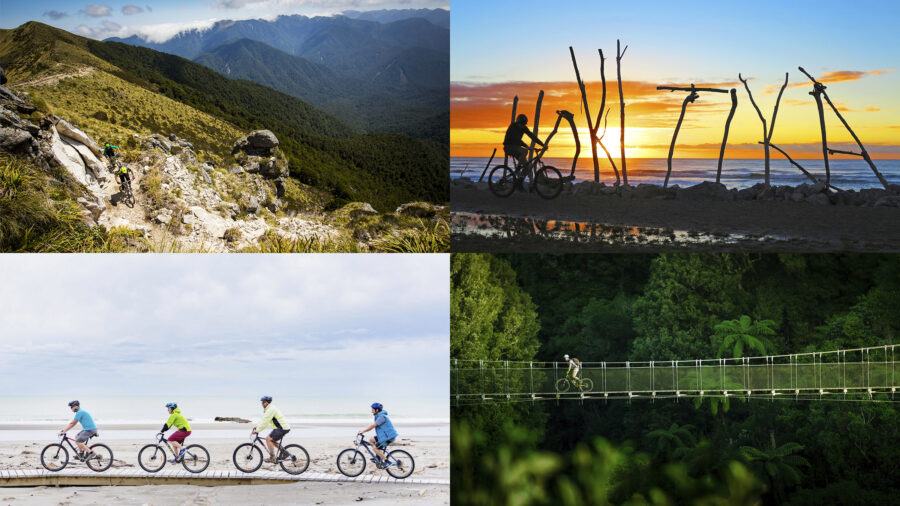It’s the quiet and still calm before the epically fun storm. In this case, it’s a pause at the top of an oh-so-sweet (and steep) mountain bike (MTB) trail that’s about to send me winding back down, and down some more, toward the Switzerland adventure town of Zermatt far below. To my right is the upcoming trail; to my left is something that has been a fitting background accompaniment for the entire day’s ride so far: the Matterhorn, one of Europe’s (and the world’s) most famous mountains.
For many keen MTBers (myself included) this moment is a true bucket-list one. Zermatt’s MTB trails are famous, and for good reason: the trail network is diverse and covers a wide area, plus it recently hosted the UCI MTB World Championships. I’m far from a contender, but in the company of Cornelius Schreck of Zermatt Tourism, I have the chance to experience just a little of what the pros did during the previous week, albeit at a less frenetic speed.
It’s a nice change of pace. The past eight days have seen me criss-cross Switzerland as I sample some of the most memorable outdoor experiences this adventure wonderland of a country has to offer – and there have been many – so sitting here on my bike, taking in the Matterhorn and surrounding peaks from my lofty viewpoint, offers a great chance to reflect on how I’ve arrived at this point…
A cyclist’s paradise
If there’s a physical and logistical embodiment of the term ‘Swiss engineering’ then it has to be Switzerland’s public transport system. In terms of outright efficiency, timeliness, and an app that’s next-level excellent, no other country I’ve travelled in can compare. I had been told of the efficiency of the transport system before I left Australia, and after a very late arrival into Zurich – and having to be in the city centre for a gravel bike ride (yes, that’s right) – the SBB app was put to work straight away to get me there on time. Of course, it did; the two trams I boarded were both on time to the minute, and there was even an estimated time for how long it would take me to walk from my last stop to the meeting point at Zurich’s (very busy) central train station.
Starting a gravel bike ride in the middle of a country’s largest city may sound like an oxymoron, but it is, indeed, possible in Zurich. I meet Evelyne Jeannerat, Head of Markets for Zurich Tourism, at her office, with our bikes (my loaner Specialized gravel bike was courtesy of Cycle Store Zurich). After a quick chat about where we’ll be riding (a big loop out and around the city outskirts) we grab a coffee and head out.
The beginning of our route incorporates a few short on-road sections where the first thing I notice (and love) is the local drivers’ tolerance for cyclists – an incredible contrast to Sydney’s aggro drivers. The road section is short before we veer off and onto one of the many public pathways the city contains. These are shared paths (usually a mix of sealed and unsealed surfaces), and on our ride we’re following alongside the pretty Limmat River, which runs through the city. Impressively, our path offers a sensation of not being in a city at all; trees bordering one side and the river on the other make for a very quiet and pleasant first couple of hours of riding.


As we move out of the city, we also curve up and around. The forests surrounding Zurich’s local peak – Uetliberg – are our next goal. It’s here that the sense of being in the wilderness, when you’re right near a bustling city, hits strongest; tall trees shade us as we climb up and up, before enjoying a descent along a wide gravel track to a viewpoint that reinforces that ‘next door to town’ feel of this ride. We stop to check out the city below us, and I’m amazed by just how quiet and still it is from our lofty perch – and yet the busy city is still seemingly within touching distance. No sooner do we get our breath than it’s time to return to all that busyness. What’s more, the last hour of the ride includes a freak rainstorm and plenty of on-road riding, which is – again, thanks to those patient drivers – not a problem at all. The ride is both exhilarating and educational; after this first-day intro to Zurich’s secret outdoors, I can’t see how being able to enjoy a long bike ride through some pristine outdoor environs and then duck back into town for another coffee and croissant, shouldn’t be at the top of every city’s planning list. When I mention this to Evelyne, she just laughs and nods knowingly. I’m seriously envious…
Food, food, everywhere
After returning the bike and quick lunch with Evelyne, I’m once again back on public transport – firstly to head back to my hotel for a quick shower and change of clothes, and then to go pretty much straight back out again. This time, it’s for an afternoon of walking through the Zurich West district, a revitalised former industrial area that now offers visiting food lovers the chance to sample any number of different cuisines such as Italian, Asian and Swiss – and also some craft beer. It’s known as the ‘Zurich Gastronomic Revolution’, a nod to the city’s growing reputation as a globally renowned culinary destination. The tour itself is around four hours of walking between a number of food outlets, and as well as the different cuisines to sample, you learn about the district’s transformation from an industrial centre to a foodie haven. And yeah, it’s this first day’s perfect endpoint after the bike ride; I’m so full after this that I beg off dinner at the seriously cool Frau Gerolds Garten, simply because I could not fit another thing in.
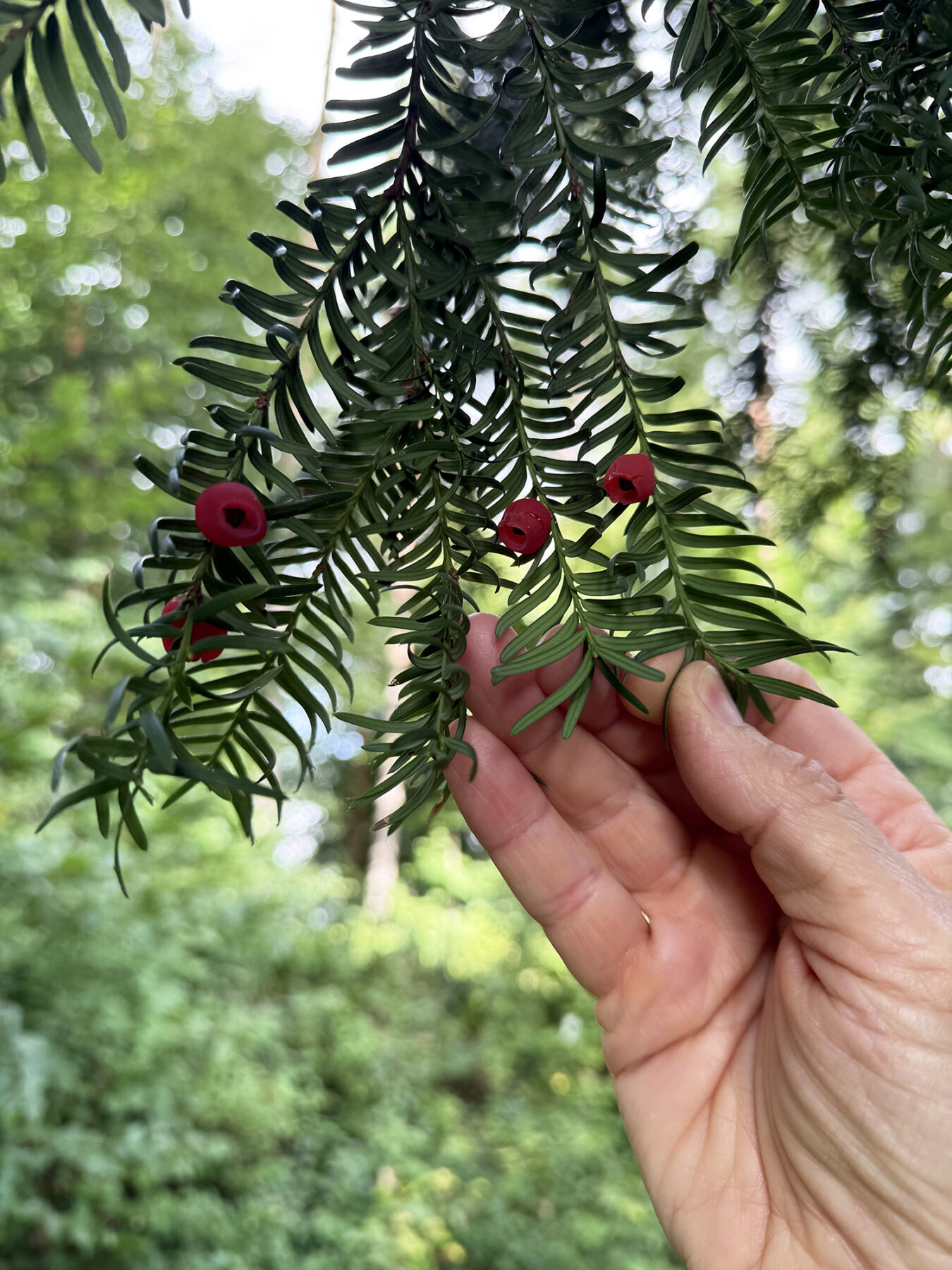

The gastronomic theme carries over to the next day, when I tackle my most complex public transport journey yet (and yes, it’s on time!) to join biologist and environmental scientist, Diana Soldo, to explore the forested flanks of Uetliberg. Diana is a veritable encyclopaedia of trees and plants; she explains just how much of the forest vegetation is edible (a lot of plants found here work excellently as soups, for example), just how old the trees can be (thousands of years), and the critically important role fungi play in forests. Oh, and one other intriguing fungi fact: the world’s largest living thing is a fungus measuring 12 square kilometres… though this isn’t in Switzerland. For this slightly ignorant forest lover, it’s an amazing few hours in the forest, and Diana’s obvious passion for her subject makes it a thoroughly enjoyable experience.
The city, from a kayak
No sooner am I bidding Diana farewell at the train station at the base of Uetliberg than I’m once again on my app, mapping out the route to my next Zurich outdoor experience: kayaking on Lake Zurich with Florian Gander, the owner of SUPkultur. It’s the perfect day for it, too, and the residents of Zurich seem to agree – the lake shores are packed with swimmers, SUPs and kayakers.
Leaving SUPkultur’s lakeside base, Florian leads me along the shoreline back toward Zurich’s city centre, where I’m afforded a totally different view of the city thanks to our route following the Limmat River. Above and around us, cars and people go about their business while we float below them, weaving our way past moored boats and further upriver. For city residents – and especially on warm days like this one – there’s always an opportunity for them to nip down to the river and cool their feet or go for a swim during lunch hour. It highlights again the residents’ love of the water; whether it’s enjoying the lake’s small beaches, exploring it and the river on a watercraft of some type, or jumping in for that lunchtime swim, it’s an integral part of Zurich life.
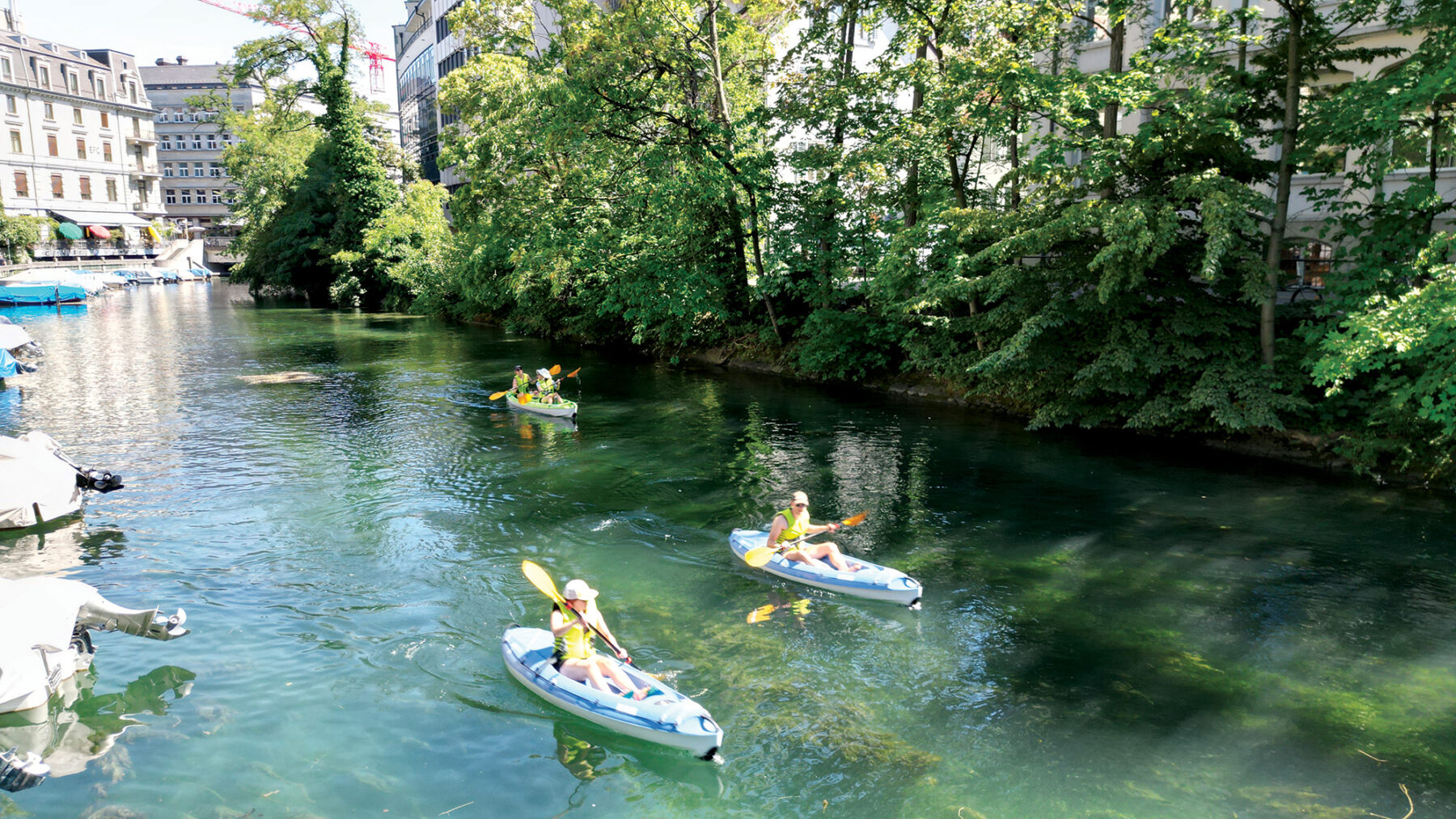
For this visiting paddler, the couple of hours exploring the river and then venturing back onto the lake is incredible. The highlight? It’d have to be the sight of kayakers and SUP paddlers enjoying this picture-perfect day on this immense lake while a paddle steamer trundles by, all with the snow-shrouded peaks of the Alps in the background. For the final day in Zurich, it was the perfect farewell moment (topped off by an excellent dinner at LUX, on the lake shore).
Here be dragons
There’s a young ibex directly below me, seemingly balanced precariously on the steep flanks of Mt Pilatus, high above the pretty lakeside city of Lucerne. How the ibex got there is something I’ll never know, but I do know my trip up to this famous peak was decidedly easier.
Earlier that morning, I had met Manuela Blapp, marketing manager of Pilatus Bahnen, at the valley cable car station in Kriens, near Lucerne. Our ascent up the mountain is via the cable car to Fräkmüntegg, where I step out into the perfect adventure world for families. It has a treetop walk and rope park. It has the Dragon Glider, a zip-line that sends you back down the mountain. And it has awesome tree tents (two- and three-person tents affixed between trees) that allow you and/or your family to spend a night up here. You can tuck into a buffet dinner at the restaurant, and then have breakfast the next morning before tackling one of the myriad hiking trails – all in tranquillity as you (and your fellow tent residents) have this part of the mountain to yourselves after the crowds have gone home (and before they arrive the next morning). It’s a cracking idea, and looking at the tents suspended in the forest, I can see why it’s so popular.


From here, Manuela and I continue up to the top of Pilatus Kulm. I’m amazed firstly by the infrastructure here (as well as the cable car, there’s the famous cogwheel train that brings visitors up from the ‘other side’ of the mountain – more on that later), and secondly by the incredible view. Lucerne is far below, and our view shows the four arms (east, west, north, south) of the city’s namesake lake perfectly. It’s here, as Manuela and I set off on a short hike around (and through) part of the mountain, that we spot our furry four-legged mountaineer. As mentioned earlier, it seems to be easily defying the steep gradient on which it’s perched, happily munching on grass and oblivious to the oohs and aahs of the amazed audience just above it.
We’re on the Dragon Path, a short hike named after the many myths surrounding Mt Pilatus itself. The name is due to the early belief (back in the Middle Ages) that dragons lived in the caves and crevices of Mt Pilatus. The story goes that a local farmer found what he described as a ‘dragon stone’ that possessed healing powers, dropped by a dragon he’d seen flying nearby. This is just one dragon-related tale found in the region; others include a lost cooper being cared for by dragons in the mountain, and one of the flying fairytale creatures also found on the shores of the Reuss River, which runs through Lucerne itself. Pretty cool, and walking around – and then through some of the tunnels of – the mountain, winding our way up to one of the viewpoints, it’s not hard to believe these fairytale creatures might have made this spectacular peak their home.

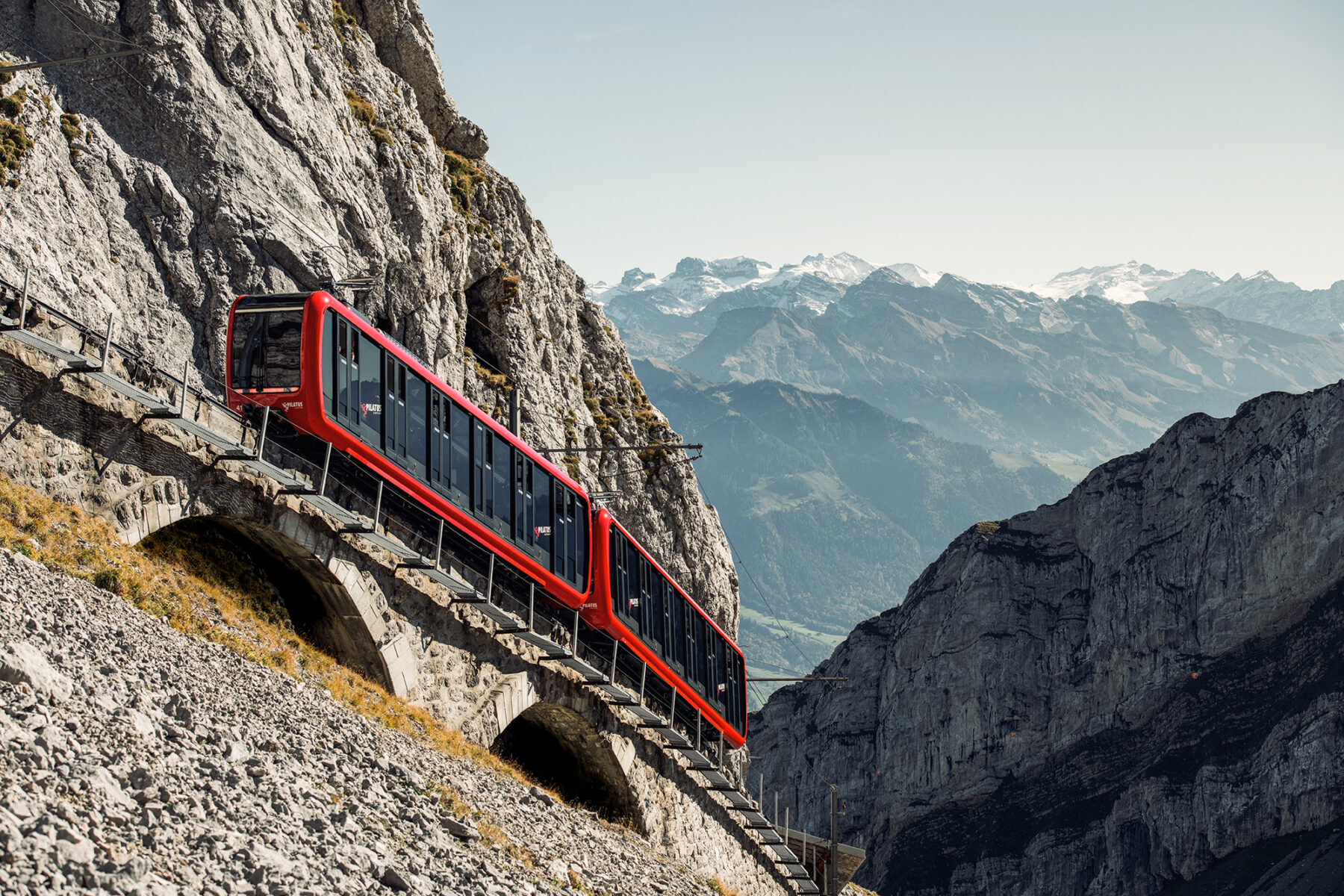
My mountain trip extends overnight here. After bidding farewell to Manuela, I head to my digs for the evening: the historic Hotel Pilatus-Kulm, built in 1890 (the ‘newer’ Hotel Bellevue, located where the cable-car and cogwheel train depart the peak, was built in the 1960s). The hotel is beautifully restored, and my room offers sublime views down valleys and across to the mountain’s famous cogwheel train, my transport back down the mountain in the morning. Before that, however, it’s time to tuck into a meal at the hotel’s restaurant. Dinner includes a brief (and welcome) interlude while us diners make our way back up to the Esel viewpoint for sunset. And yeah, it’s worth the climb up – the sun peeks through low cloud intermittently and lights up the peaks and plateaus below (including one that contains a chapel, precariously situated on the edge of the cliff). It’s a magic way to end a big day.
A sunrise kicks off the morning at Pilatus before I make my way back down the mountain via the super-impressive cogwheel train. Owing to how incredibly steep the ascent/descent is – at up to 48 per cent gradient, it’s the world’s steepest cogwheel railway) – this 30-minute journey that links the summit with Alpnachstad, far below, required a completely re-engineered cogwheel system to ensure no slipping. The result is awesome. First commissioned in 1889 (using a steam-powered train), this famous rail journey was then electrified in the late 1930s, and the stylish set of carriages I’m sitting in this morning was first used in mid-2023. It’s only when you glide down the mountain, past grazing cattle dramatically leaning into the steep slope, that you comprehend just how steep it is – and how amazing the engineering was to ensure this train completes its many journeys safely each day. The panoramic windows and roof provide an unforgettable view, too, as you roll down the mountain.
Building on top of the world
I’m wobbling, slightly, along a suspension bridge at a heady 3020 metres above sea level. Olivia Hecht, from Mt Titlis Tourism, is providing some encouraging words as I focus totally on the bridge endpoint. I slide my hand along the bridge hand-cable for a bit of balance assistance and slowly shuffle my way towards the end.
It’d been an action-packed morning: catching a train to Engelberg to meet Olivia, jumping on a cable car to Gerschnistrasse where I pick up my rental MTB (a sweet Rocky Mountain Altitude) from Titlis Rent AG, and loading ourselves (and the bike) onto another cable car to Trübsee Station. There, I leave the bike – for the moment – and then continue upwards to Mt Titlis itself.


Up here it’s a different world. Besides the high-altitude suspension bridge, we explore the mountain’s glacier cave (as the name suggests, it’s a cave/tunnel through the Mt Titlis glacier) before enjoying lunch at the Panorama Restaurant – which, as you’d expect, also lives up to its moniker in terms of views over the surrounding peaks. The restaurant also gives me a close-up view of what is known as the Titlis Project. Part of this construction project is the new Titlis Peak station, which is expected to be constructed from 2026 to 2029. We also get the chance to check out Titlis Tower (opening May 2026). This structure will house a viewing platform, Rolex boutique and new restaurant. The builders work in an incredible location, their scaffolding clinging to the mountain 3000m up.
After gawping at Titlis Tower, and checking out the ski slopes that surround it, we head back down to Trübsee Station. I pick up the mountain bike and then we jump on board the Jochpass Chairlift to head up to the trailhead. Before I start my descent, Olivia and I walk part of one of the area’s many walking trails to check out Lake Engstlen, and then it’s time to start my descent of the Jochpass Trail, timed not-so-perfectly with a downpour of rain.

The Jochpass Trail is awesome fun. Its blue grading is reflected in the janky terrain, but this is balanced by some sweetly curved berms and the ability to get up some speed quite quickly. In short, it’s a great intro to Swiss mountain biking, and whets my MTB appetite for more.
The final stage of this very big day is our return of the bike, and my very good fortune in getting to stay at the beautiful Hotel Terrace in Engelberg (reached via a tunnel and two lifts in the hill it sits on). I’m also fortunate enough to sample what ends up being (seriously) the best hamburger I’ve ever eaten – the quirkily named Yuci burger – at the funky Yucatan Kitchen & Bar. If you’re ever in Engelberg, do it. You won’t be disappointed.
Interlaken and two perspectives
The next morning’s train and bus rides bring me, a couple of hours after leaving Engelberg and entering the Jungfrau region, to Lake Brienz, one of Interlaken’s two lakes (the other is Lake Thun). I’m floating on a kayak and getting a bit of a geology lesson from my High Tide Kayak School guide, Sona (pronounced Sonia). Far from my guess of ‘around 20 metres’, Lake Brienz is 260m deep, a reflection of its creation from ancient glacial movement. It’s seriously big and on this sun-filled day provides a brilliant couple of hours’ paddling as we explore the lake’s far shore, scouting for kingfishers and paddling below an old church and a positively ancient castle. We pass some lakeside cottages with tied-up boats, inducing a slight case of envy of those who live in this idyllic location.
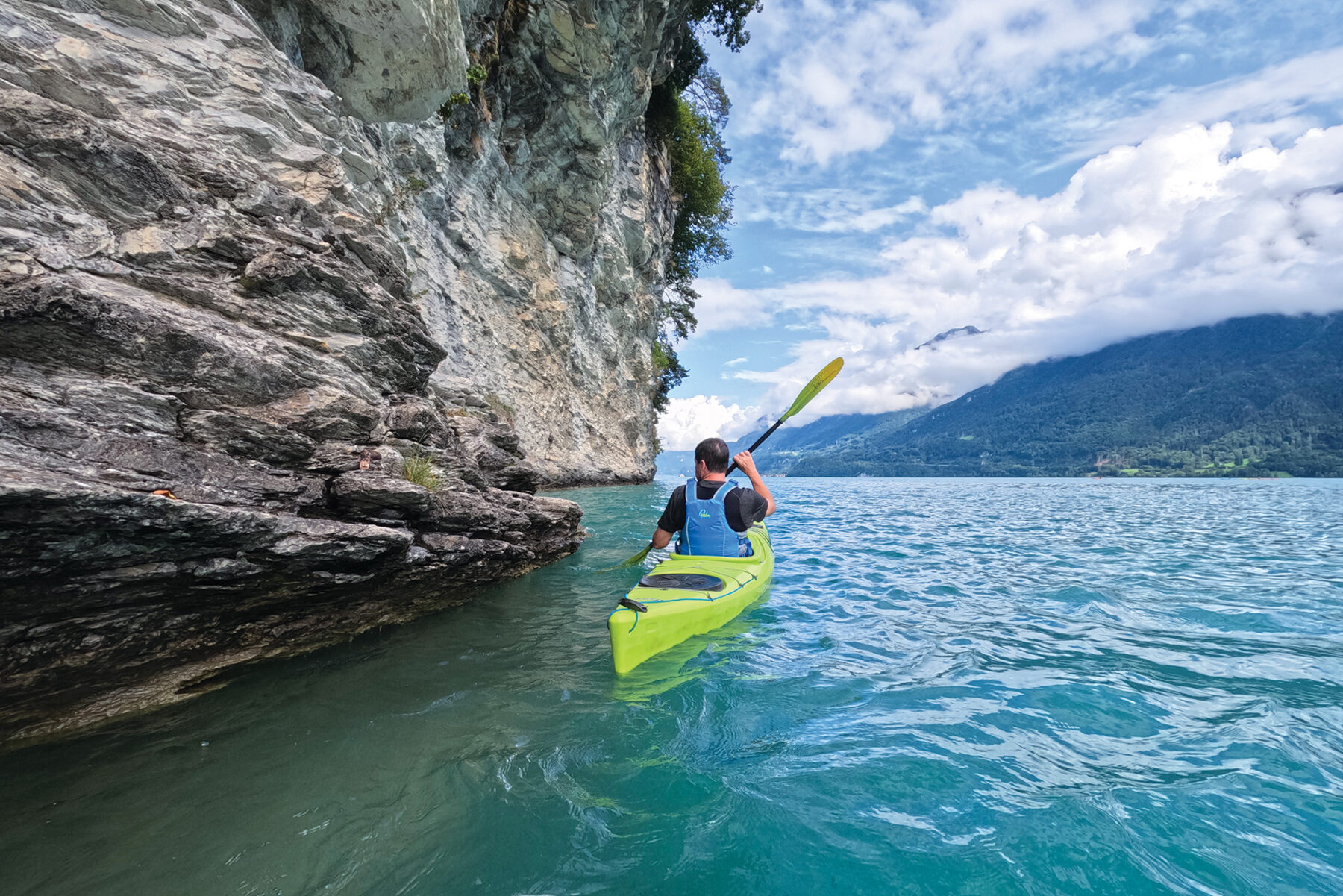
Interlaken is the quintessential adventure town: that mix of hikers, bike riders and thrill-seekers (a couple of paragliders land at a park opposite me as I walk to Hotel Metropole, my digs for this night). The vibe of folks seeking fun is clearly evident.
I soon get a better view, of both the town and the lakes, when I join Jungfrau Railways’ Daniel Bott for dinner up the Harder Kulm – specifically, at the Panorama Restaurant, which sits 1322m above sea level. Reached via funicular, the restaurant’s location is brilliant, and that’s before you experience its overhanging viewing platform that provides a vista over the peak’s steep, forested slopes, and across the lakes and town below.
Gorges, glaciers and more great heights
Grindelwald exudes that typical look and vibe of a Swiss mountain town. Nestled in a valley with steep peaks all around, it’s incredibly picturesque and a doddle to get around. It’s also home to the natural wonder that is Glacier Gorge. It’s here I find myself early in the morning, walking through the ultimate example of the power of a glacier. The gorge features walls of rock up to 300m in height, the end result of the lower glacier’s movement through this area over the past 10,000 years.


The glacier itself is no longer here, but the path it left through the solid rock is incredible. There’s been a walkway of some sort since 1875; in the 1950s, the local spa association reconstructed the original one, and it has been extended a few times since then. When ambling along the current walkway, you’re accompanied by the loud, rushing water of the Lütschine River. The whole walk (it takes about an hour and a half return) is incredible; following the walkway on the outside of the gorge walls, you also move in and through the rock itself courtesy of tunnels dug through certain sections.


Leaving the gorge behind, I jump on board the aerial cableway to First, a station high in the mountains that acts as the hub for hikers looking to explore the many trails that loop out from here. The big must-do for those with minimal time (such as myself) is the suspended walkway – it’s just brilliant, as long as you have a head for heights, and provides mountain and glacier views that deserve the title of ‘gobsmacking’.
My night’s accommodation is at Schynige Platte, a mountain station at 1967m, nearly directly opposite – and across the valley – from my previous night’s dinner at Harder Kulm. I’m stoked to be heading there via another cog railway – this time in a fully restored historic train complete with timber benches and large windows – to view the surrounding mountains and those two immense lakes. From there, it’s another evening of brilliant sunsets and great food at Berghotel Schynige Platte’s restaurant, and the very pretty Alpine Botanic Garden (near the station and worth a look). There are also some brilliant hikes here with views of some of the Swiss Alps’ most famous peaks, including the Eiger and Jungfrau (it’s not the last time I’ll see those two iconic mountains).
The hall of the mountain king
Jungfraujoch. It’s known as ‘the top of Europe’ (it’s the continent’s highest accessible railway), but as I sit in Mönchsjoch Hut (at 3657m in altitude it’s Switzerland’s highest manned hut), tucking into a cheese-filled sausage, I can easily describe it in just one word: awesome.
Earlier, I’d met Kelly Joss from Jungfrau Region Tourism, Jacob Erni from Jungfrau Railways, and Jacob’s super-friendly black labrador, Zaria, at Wilderswil for our journey to Jungfraujoch. As with each of my days in Switzerland, this journey comprised a mix of gondola and then train (this time, through a mountain). On the way up in the Eiger Express (an amazing tri-cable gondola that can hold 23 people!) we pass the famous Eiger North Face. It’s imposing, to say the least; in my former climbing life it was on my list of something to see. Up close, it’s terrifying. We don’t spot any climbers on this most challenging of climbs, but we do see the old rail tunnel’s windows through that mountain, after Jacob points them out. The following train ride (it’s been running since 1912) takes us through the Eiger to the station itself – all seven storeys (yes, seven, and with six restaurants, plus numerous shops) of it.


As Zaria and Jacob carve us a path, we move through the heaving crowds and onto the start of the Discovery Tour, a walk of around 1.5 hours – initially through ice (actually carved out of the ice in the 1930s), with ice carvings dotted along the way, before moving into the true alpine outdoors and making our way to Mönchsjoch Hut. I can sense all four of us breathe a sigh of relief to escape the crowds, and it’s nice to settle into the walk to the hut.
It’s a fantastic walk. We’re surrounded by mountains (Jungfrau, the Eiger and plenty more), and glaciers below, as we trek for 45 minutes to the hut. It’s always hard to describe the sheer scale of landscapes such as this one; it’s definitely something that needs to be experienced yourself to gain that full appreciation of the scale and majesty. It’s a cracking day to boot, and it all feels rather surreal when I’m back in my hotel in Grindelwald, later that evening, with the now-more-distant Eiger still doing its best to loom through my window view.
In the shadow of giants
There are few more picturesque mountain towns than Zermatt thanks to its alpine setting and one of the world’s most famous mountains looming above it. The Matterhorn is the (very large) jewel in the crown of this popular destination, and the iconic peak’s steep faces and pointy top can be seen from all over the village. It’s incredible. The village bustles with visitors and locals, all on bikes, walking or in minivans that double as taxis. The winding streets are fun in themselves as you follow them around, checking out the many cafes and restaurants.


For me, it’s a first-time visit of mixed emotions; in my climbing days, the Matterhorn was firmly on my radar, but with the arrival of children and general business of life, it never eventuated. However, that doesn’t mean my visit here can’t include some alpine adventure. And so it is that I meet Cornelius Schreck, project manager of bike tourism at Zermatt, who’s still buzzing after Zermatt just hosted the UCI Mountain Bike World Championships. We’re heading way up into the mountains to sample some of Zermatt’s famous MTB trails. Even though today he’s riding with a middle-aged mountain biker of significantly less skill than those from the World Champs, his incredible passion and enthusiasm for mountain biking here doesn’t allow any disappointment – he’s pumped to show me some of the most popular trails.


After a quick trip up the mountain (courtesy of Zermatt Cableway), and three hours of incredible riding later – climbing up and down dale, pausing halfway for the world’s best apricot pie, and then sidling along steep slopes, always in the shadow of the Matterhorn before hitting more downhill – I can fully relate to Cornelius’s passion. The riding here is just brilliant with a mix of trails, from natural and cross-country to berm-filled flow extravaganzas. We finish with one of Zermatt’s original MTB trails before returning to one of the many bike shops where I return my Specialized Levo 4 e-MTB, both of us wearing what can only be described as shit-eating grins.
Switzerland: Where ‘adventure for all’ is a way of life
For me, this short taste of Zermatt’s mountain biking just completes the thoughts that have grown in my head over the 10 days I’ve spent in Switzerland. No matter how you define ‘adventure travel’, Switzerland can deliver it – for any taste or preference. From the gravel ride around Zurich to the cool, food-based walk in that city (with high-altitude equivalent walks in Zermatt, where you sample the local cuisines), to exploring Gorner Gorge with your family – or tackling some exciting via ferrate or canyoning – you’ll never run out of things to do here. And it’s all within easy reach thanks to that world-class public transport system.

It may sound like a cliché to say outdoor fun never ends in Switzerland but, in truth, it simply doesn’t. That’s due to a combination of those aforementioned spectacular natural assets, plus the Swiss people themselves, who are always very welcoming and always happy to share their not-so-big secret: that they live in one of the world’s best adventure wonderlands.
Fact file
Getting there: A number of airlines fly from Australia to Switzerland daily.
Getting around: Grab a Swiss Travel Pass for your public transport in-country. The SBB Mobile app is incredibly easy to use and makes the most convoluted trip between towns and cities easy.
Go to Switzerland for more info on travelling to this amazing country.
The writer was a guest of Switzerland Tourism.

